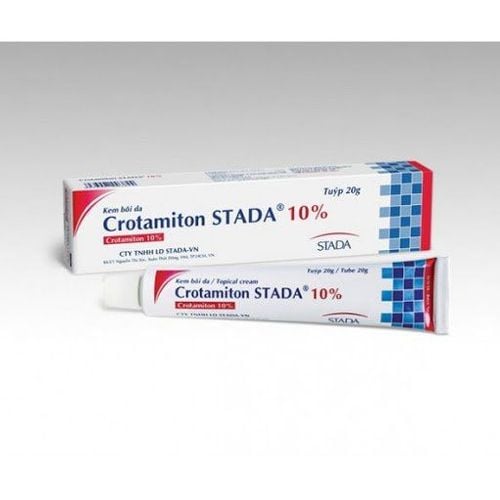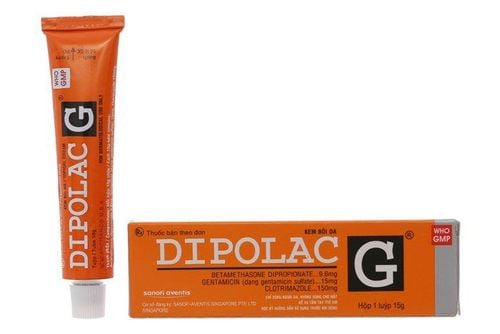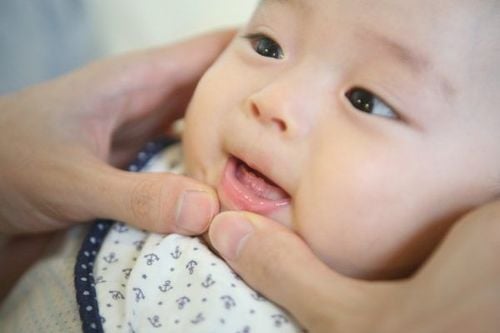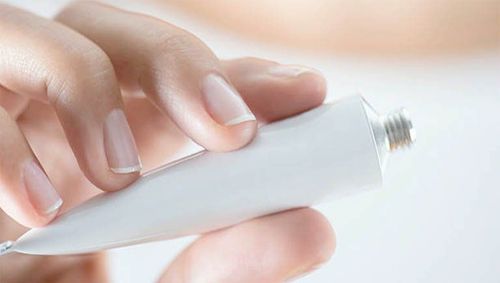This is an automatically translated article.
Molluscum contagiosum is a soft skin tumor that is common in children, especially children aged 1-10 years. Molluscum contagiosum will usually go away on its own and do not require treatment, but your doctor may conduct treatment if the molluscum contagiosum is widespread, causing pain, itching, or cosmetic damage in your child.
1. Molluscum contagiosum is a type of molluscum contagiosum common in children
Molluscum contagiosum is a skin infection caused by a virus, usually appearing in children aged 1-10 years. This is a molluscum contagiosum with the following characteristics:Appears round, raised papules on the surface of the skin, firm, with smooth, concave surface in the center. The nodules may be pink, milky, or yellow. The diameter of each papule is usually 2-6mm, the papules are often clustered, usually painless but may itch, sometimes with red and scaly lesions around due to scratching, scratching or due to increased sensitivity. of soft lumps on the skin. The location of the lesion distribution in children can be on the face, hands, feet or anywhere on the body. If the disease is mild, the child may have only a few nodules, appearing locally, but if the disease is severe, the child will have up to hundreds of nodules and distributed throughout the body.
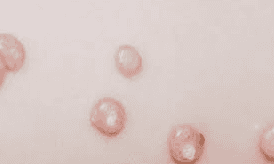
U mềm lây có thể xuất hiện bất cứ tại vị trí nào trên cơ thể
2. How is molluscum contagiosum contagious?
Molluscum contagiosum is a form of tumor in children, caused by the Pox virus. This virus can enter and infect through open wounds on the skin. Infection is transmitted by direct contact between an infected person and a healthy person. In addition, because this virus thrives on wet surfaces, it can be spread through sharing damp towels, clothing, personal items, gym mats, swimming pools,... Molluscum contagiosum is a childhood tumor, which is especially common in warm, humid environments and in children with eczema.
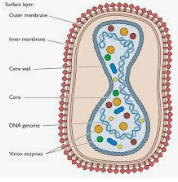
Trẻ mắc bệnh u mềm lây do virus pox gây ra
3. How are molluscum contagiosum diagnosed and treated?
In fact, molluscum contagiosum is easily misdiagnosed with other skin diseases. Accordingly, to diagnose molluscum contagiosum, dermatologists mainly rely on the clinical symptoms of the disease. To confirm the diagnosis, the doctor may order a specimen stained with toluidine blue to reveal the inclusion of the virus. Simultaneously, differential diagnosis with some skin infections similar to chickenpox, herpes simplex, folliculitis, flat warts,...
Molluscum contagiosum is a benign tumour, usually not requires treatment and will clear up on its own over time (about 6 months to 4 years). However, in the case of molluscum contagiosum spreading, itching, pain, affecting the aesthetics, the child wishes to be treated... the doctor can treat the molluscum contagiosum by other methods. such as:
Cryotherapy with liquid nitrogen (cryosurgery): This is a method of using liquid nitrogen with a temperature of -196 degrees Celsius to treat benign tumors in the epidermis of the skin, including soft tumors in the skin. children . Before the procedure, the molluscum contagiosum will be covered with numbing cream (EMLA) for 30-60 minutes to relieve pain. Scaling molluscum contagiosum with curret, before shaving must also apply EMLA 2.5% cream to reduce pain. Laser therapy: helps to remove soft tissue by removing tissue. Apply 0.025% or 0.01% imiquimod or tretinoin creams to molluscum contagiosum in the evening daily. In some children, after a period of time on the skin, the molluscum contagiosum becomes red and forms pus-like pustules. This is usually a sign that the body is starting to get rid of the virus. As long as the child is not in pain and does not have a fever, it is not a sign of infection.
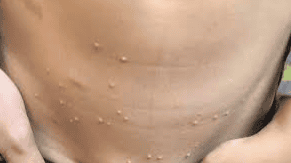
Trẻ bị u mềm lây cần được gặp bác sĩ da liễu
4. Measures to prevent the risk of molluscum contagiosum in children
Molluscum contagiosum is a contagious disease, so hygiene measures should be taken to avoid the risk of childhood tumours spreading on the child's body and spreading to others:
Keep the child from touching the nodules on the skin. If the child feels itchy, you can apply a steroid cream to reduce the itching sensation, to prevent the child from scratching. Dress your child in long-sleeved clothes to cover molluscum contagiosum , this helps children avoid the risk of scratches and the tumor spreading throughout the body, and protects others from infection from the child. Avoid sharing baths, sharing objects such as clothes, towels, toys, etc. Family members need to wash their hands often with soap, dry their hands with a clean towel. Mother washes children's bed sheets, pillowcases, ... daily. Clean children's bedrooms and living areas.
Although the disease is not too dangerous, it can cause discomfort, inconvenience and affect the aesthetics of children. Therefore, parents need to apply preventive measures, at the same time maintain a reasonable diet for their children, fully vaccinated with vaccines to increase resistance.
With many years of experience in examining and treating diseases in children, now the Pediatrics Department at Vinmec International General Hospital has become one of the major health care centers, capable of examining , screening and treatment of many specialized diseases in children. Therefore, if the child shows signs of illness, parents can take the child to Vinmec International General Hospital for examination and receive support and advice from doctors and experts.
Please dial HOTLINE for more information or register for an appointment HERE. Download MyVinmec app to make appointments faster and to manage your bookings easily.
Reference source: babycenter.com




